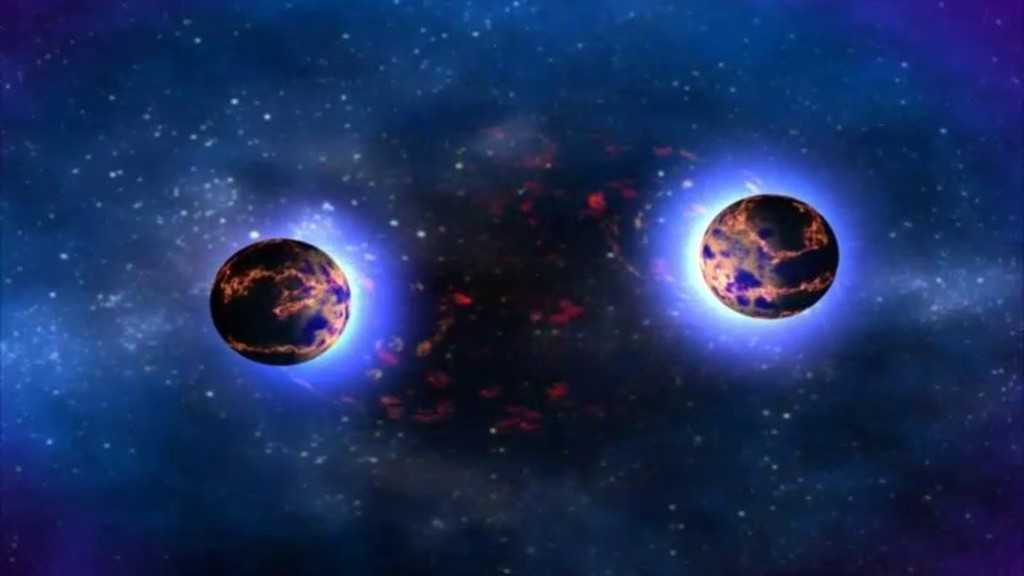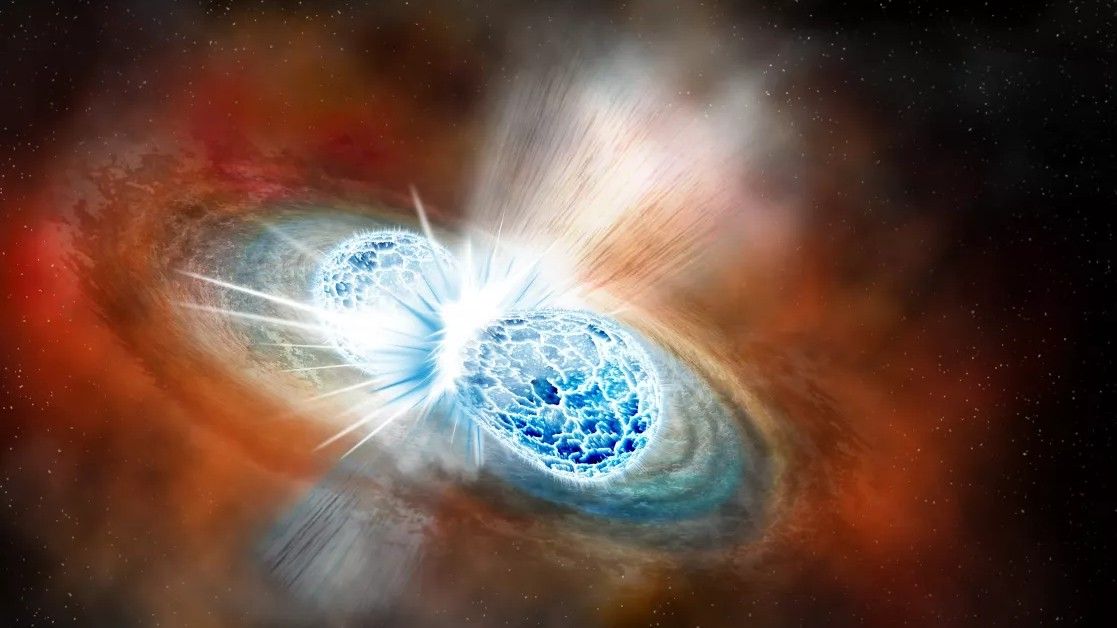For the first time, astronomers have linked mysterious pulses of energy called fast radio bursts (FRBs) with the ripples in space-time emitted by collapsed, colliding stars. The findings, published March 27 in the journal Nature Astronomy (opens in new tab), propose a new explanation for FRBs, which have vexed scientists for more than a decade.
FRBs are massive blasts of radio energy that can outshine every star in an entire galaxy combined, while lasting just fractions of a second. Though FRBs were discovered in 2007, their origins remain shrouded in mystery. That’s partially because, while some FRBs repeat periodically, many appear and disappear in mere milliseconds.
Magnetars — the ultradense, collapsed cores of exploded stars (known as neutron stars) with powerful magnetic fields — are the leading candidates for the emission of FRBs. But recent observations suggest there may be multiple possible sources, which may include neutron star collisions.
In April 2019, the Laser Interferometer Gravitational-Wave Observatory (LIGO) detected ripples in space-time known as gravitational waves from a neutron star merger designated GW190425. Hours later, the Canadian Hydrogen Intensity Mapping Experiment (CHIME) spotted a bright, nonrepeating FRB from the same region of space.

“We discovered a burst of radio waves, lasting one-thousandth of a second, was generated two and a half hours after the merger of two neutron stars, which are the extremely dense remnants of exploded massive stars,” study co-author Clancy James (opens in new tab), a radio astronomer at Curtin University in Australia, told Live Science via email. “Our theory is that this burst of radio waves occurred because the merger created a ‘supermassive’ neutron star which, when its spin slowed down, collapsed into a black hole.”
While neutron star mergers have been suggested as possible causes of FRBs in the past, the new observations provide the first evidence that the theory may be correct. The team used three primary pieces of information to make this connection.
“Firstly the timing of the events,” James said; the FRB arrived just 2.5 hours after the gravitational wave signal. Secondly, the location of the FRB was consistent with that of the gravitational wave.
“And thirdly the distance,” James added. “It was especially the distance that helped.”
While most FRBs arrive from billions of light-years away, gravitational wave detectors such as LIGO are sensitive to distances of only around 500 million light-years. This FRB was unusually close, and its estimated distance was spot-on with that estimated from GW190425.
“What surprised us was just how much all the pieces fell into place!” James said. “This was a beautiful clean pulse — exactly what you might expect from a cataclysmic event.”
According to James, these results indicate that there are at least two different families of FRBs: one-off FRBs from cataclysmic events such as neutron star mergers, and repeating FRBs produced by magnetars or another unknown source.
This discovery may also affect scientists’ understanding of neutron stars, as it suggests that the largest possible mass of these stellar remnants could be greater than currently expected.
“This is because the resulting object from the two merging neutron stars didn’t collapse immediately into a black hole, but could temporarily resist gravity,” James said. “In turn, this tells us something about the fundamental nature of matter at extreme densities and pressures, which we can’t study here on Earth. It may even be evidence of a new kind of star — a quark star.”
The team hopes to strengthen the relationship between FRBs and neutron star mergers as the world’s gravitational wave observatories begin new observations this spring.
“The next operating run of the gravitational wave observatories, O4, begins in May and CHIME and other radio telescopes like the Murchison Widefield Array that I work with are waiting to see if there’s an FRB from any neutron star mergers that are seen,” James said. “We’re also commissioning a new instrument to detect more FRBs and pinpoint them to their galaxies. Hopefully, that’ll start working shortly!
Stay connected with us on social media platform for instant update click here to join our Twitter, & Facebook
We are now on Telegram. Click here to join our channel (@TechiUpdate) and stay updated with the latest Technology headlines.
For all the latest For Top Stories News Click Here

